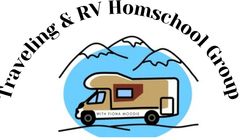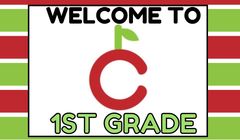Learn more about American Indians/Natives, past and present, with Outschool
Read about the fight for American Indian/Native equality, stories of famous American Indian/Native leaders, both past and present, and how your family can learn more.
Many people only associate American Indians/Natives with tipis, powwows, and beautiful artwork but not much else; while these are all part of American Indian/Native cultures, there's much more to learn.
November is American Indian and Alaska Native Heritage Month. It’s the perfect time to learn more about and celebrate the diverse histories and vibrant traditions that are part of American Indian/Native cultures.
Long before Europeans arrived in North America, millions of Indigenous people lived throughout the land. Unfortunately, from the beginning of European colonization until modern times, American Indian/Native people have suffered disproportionately, but they have survived and are still here.
For example, Alaska Natives and American Indians/Natives are more likely to experience violent crime and suffer higher rates of chronic disease and lower life expectancy.
However, celebrating their cultures, triumphs, survival, and resilience is just as important as learning about genocide, racism, and social disparities.
American Indian/Native people also have to combat numerous stereotypes and misconceptions. Much of what is taught about the past or present is incorrect. What people see in pop culture are mostly stereotypes. For example, historically, there were dozens of different types of homes, not just tipis.
Today, American Indian/Native people live in the same kinds of homes as other North Americans. And it isn’t just the men that can be warriors. Most American Indian/Native nations are matriarchal cultures, and many women fight to protect their people and lands.
Today, we want to take some time to learn about the beauty and resilience of these cultures. Including causes that fight for American Indian/Native equality, stories of famous American Indian/Native leaders, both past and present, and how your family can learn more.
Correct terminology
A quick note about terminology: There is no one term that all American Indian/Native people agree on as the best English term for them.
Coming from hundreds of different nations, trying to find an English term to include them all doesn’t work. American Indian/Native people prefer to be identified by their own nation’s name over anything else (“Oglala Lakota” instead of “Native American” or “Diné (Navajo)” instead of “American Indian”).
American Indian, Native American, Native, and Indigenous are all generally acceptable in the United States, but preference varies, and some people dislike some of those terms.
“Indian” is not the correct term. However, many American Indian/Native people have reclaimed it as slang. It may be used within their own communities, but is generally not preferred to be used by outsiders. Before the 1970s, the only generic terms used were “American Indian” and “Indian,” so many organizations were created using those words and still use them today.
The continual fight for equality
It wasn't until the Voting Rights Act of 1965, and the American Indian Religious Freedom Act of 1978 were passed that American Indians/Natives had full access to the United States Bill of Rights. Since then, many groups and organizations have formed to secure rights and advance the causes of American Indian/Native people.
Native American Rights Fund (NARF)
The Native American Rights Fund is an organization that, since 1970, has been providing legal assistance nationally for American Indian/Native nations and individuals.
The NARF has its headquarters in Boulder, Colorado, and has been instrumental in winning hundreds of cases, including environmental protection, voting rights, and treaty rights. They are currently working on a case involving an energy company attempting to build a tunnel under the Great Lakes in the Mackinac Straits.
National Congress of American Indians
The National Congress of American Indians was founded in 1944 to serve the broad interests of American Indian/Native nations and communities and to help ensure that the U.S. government upholds its trust responsibility to their nations and peoples.
The preamble to the constitution of the National Congress of American Indians states, “In order to secure to ourselves and our descendants the rights and benefits the traditional laws of our people to which we are entitled to as sovereign nations.”
National Indian Youth Council
The National Indian Youth Council is the second oldest American Indian/Native non-profit organization in the U.S., next to the NCAI. Founded by a group of students, they began as an American Indian/Native-rights advocacy group to address treaty violations and other rights issues.
Following the cultural traditions of many nations, their mission is to “foster the self-determination of Indigenous people through economic sovereignty, cultural flourishing, political resilience, and community well-being.”
The American Indian Movement
The American Indian Movement is a civil rights organization born out of the Red Power movements of the 1960s and 70s. AIM was founded in 1968 by Dennis Banks, Clyde Bellecourt, Eddie Benton Benai, and George Mitchel.
The movement began as an urban response to issues of poverty, discrimination, and police brutality. It quickly grew to address broader cultural and spiritual issues faced by all American Indian/Native peoples as a result of settler colonialism in the United States.
The rich histories and living traditions of American Indians/Natives
The United States government now recognize 574 Native American nations, with the Navajo and Cherokee Nations being the two largest, with approximately 400,000 and 392,000 citizens, respectively.
There are dozens more nations that are state recognized or unrecognized but are legitimate American Indian/Native nations. Their current political situations are a reflection of U.S. policies and the history of attempted extermination campaigns rather than the legitimacy of those nations.
Throughout history, each nation has had many inspirational citizens and leaders; people who fight for their people and the right to maintain their ways of life. Read on to learn more about six influential American Indians/Natives.
Aiionwatha (Hiawatha)
The Haudenosaunee (Iroquois) Confederacy was formed in the 1100s. The five original nations of the confederacy lived in deadly conflict before its formation. A Wendat (Wyandot/Huron) man known as the Great Peacemaker brought a message of peace and diplomacy to their nations. He had difficulty speaking, so Aiionwatha (Hiawatha), having come to believe in his message, joined him in leading the other nations into creating the confederacy.
Aiionwatha was a great speaker, which is why he was chosen to help the Great Peacemaker spread his message. The Great Law of Peace was recorded in a wampum belt, known today as the Hiawatha belt, and came to be one of the main influences on the creation of the U.S. Constitution and government.
Tȟatȟáŋka Íyotake (Sitting Bull)
Tȟatȟáŋka Íyotake (Sitting Bull) was born in 1831. He led the Lakota/Dakota (Sioux) Nations when the United States government rapidly invaded sovereign Lakota territory, as agreed upon by treaties. He is perhaps most famous for leading the Lakota victory at The Battle of Greasy Grass (Little Big Horn), which became known as Custer's last stand.
Custer had been illegally leading soldiers into treaty land to look for gold and to attempt to exterminate the Lakota. With only a few hundred men, he ordered the attack on Sitting Bull’s encampment of 20,000 Lakota, Cheyenne, and Arapaho people.
American Indian/Native warriors surrounded them and defeated the entire 7th cavalry, Custer included. Sitting Bull was an instrumental leader among the Lakota/Dakota. He was assassinated on December 15, 1890.
Buffalo Calf Road Woman
Buffalo Calf Road Woman was a warrior who was a citizen of the Northern Tsis Tsis’tas (Cheyenne) nation. She fought alongside her male counterparts in battles such as the Battle Where the Girl Saved Her Brother, also known as the Battle of the Rosebud, and the famous Battle of Greasy Grass (Little Bighorn.)
Tsis Tsis’tas (Cheyenne) history even has it that she was the warrior who dealt Custer his deadly final blow.
ᎠᏥᎳᏍᎩ ᎠᏍᎦᏯᏗᎯ (Atsilasgi Asgayadihi/Wilma Pearl Mankiller)
Mankiller was the first female ᎤᎬᏫᏳᎯ (u-gv-wi-yu-hi, the Cherokee word for their leaders) of the Cherokee Nation of Oklahoma. Born in Oklahoma in 1945, she was the sixth of eleven children. Mankiller's surname refers to a traditional title in the Cherokee language.
Her activism was inspired in 1969 when a group of American Indian/Native activists took over Alcatraz, the abandoned federal penitentiary in San Francisco. They laid claim to the area by 'right of discovery' to expose the suffering of Native peoples. While serving the Cherokee Nation, she was instrumental in providing health services, job training, and early education for her people.
Deb Haaland
Deb Haaland is the first American Indian/Native person to ever serve as a cabinet secretary to the United States president. Born in 1960, she is a citizen of the Kawaika (Laguna) Pueblo in New Mexico.
She was one of the first American Indian/Native women to be elected to Congress in 2018 and was appointed as the Secretary of the Department of the Interior in 2021. In Congress and the Department of the Interior, she focuses on environmental justice, climate change, missing and murdered Indigenous women (MMIW), and investigating the crimes of Indian Boarding Schools.
Tom Goldtooth
Tom Goldtooth is Diné (Navajo) and Dakota and the executive director of the Indigenous Environmental Network. Tom organizes with American Indian/Native communities and nations to fight environmental racism and climate change issues that impact Indigenous peoples.
He has organized locally, nationally, and internationally for over 30 years. He was awarded the Gandhi Peace Award in 2015. The Indigenous Environmental Network was actively involved in the No DAPL resistance camps at Standing Rock.
Unique American Indian/Native traditions
Many people have heard of traditions like powwows, feathers, and wampum but may not know what they are or the history behind them. The following are just a few of the many traditions among the hundreds of different American Indian/Native nations in the United States:
Powwows
Image credit: Andrew James via Unsplash
Powwows are intertribal social gatherings for celebrating culture, family, and shared traditions. People from many nations come together to celebrate their cultures through traditional and modern dances and songs. There are many styles of dances.
Each dance has a specific style of regalia the dancer wears, which is traditional clothing and not a costume. Some vendors sell handmade cultural items and other wares. Contrary to popular belief, the word “powwow” does not mean “meeting.”
The Gathering of Nations in Albuquerque is the largest powwow in North America. More than 700 nations gather together during this celebration. Powwows are usually open to the public and a great way to interact with your local American Indian/Native nations and communities.
Feathers
Different types of feathers have different meanings in American Indian/Native cultures depending on the nation. For most nations, the feathers and parts of specific birds of prey are sacred and carry significant meaning, with eagle feathers being the most important. Sacred feathers are used in ceremonies and prayers, and they are also given to people for special purposes.
Each feather is earned and is a sign of honor and respect. Historically they could be earned through things like serving the community, being a great leader, and war. Today they are given for things like graduations, military service, major achievements, and serving the community in various ways. They are always a sign of performing great works in life.
In this way, wearing fake feathers, like in costumes and fake headdresses is disrespectful and similar to the concept of “stolen valor.” Due to the protected status of eagles, it is illegal in the U.S. for non-Natives to possess eagle feathers. However, American Indian/Native people have access to them for cultural and religious purposes.
Wampum
Image credit: onondaganation.org
Wampum is a type of bead made from whelk and quahog shells. Traditionally they are made by several nations in the Northeastern Woodlands, such as the Wampanoag. White beads symbolize things like purity and light, purple beads symbolize things like grieving and death, and purple and white beads symbolize the duality of the world.
Wampum historically was gifted for various occasions such as weddings or births. They also can be used as symbols of social agreements. Most notably, they can be strung together to make Wampum Belts which record information such as treaties, history, stories, and ideas. The belt is traditionally not worn but is said to empower the speaker when held.
Important Facts to Know
Since much of what is taught about American Indians/Natives is incorrect or riddled with stereotypes, it is important to learn some basic facts and vital information before diving into learning more about them.
American Indians/Natives are modern people
They exist today and live similar lives to other North American people. They do not live in tipis today any more than Europeans live in medieval castles today. Most books and learning materials don’t mention American Indians/Natives past 1900.
Because of this, stereotypes about them only existing in the past are common. It is important to learn about modern American Indian/Native people. For younger students, consider teaching about modern American Indian/Native people and then include histories when they get older.
They are all around you
Some people may meet American Indians/Natives and not even realize it. Around 70-80% of American Indian/Native people live in cities today. They work in different jobs, go to schools, play sports, and go to concerts and other social events.
Every American Indian/Native nation is unique
Each has its own culture, traditions, food, values, language, religion, and history. Think of each American Indian/Native nation as a different country. They are different from each other but also share some things in common.
There are over 600 American Indian/Native nations in the United States today. It is best to learn nation-specific information instead of lumping them into a monolith. While it is impossible to learn everything about every nation, you can learn about a sampling of nations around the U.S. from different regions.
American Indians/Natives have their own pop culture
This includes American Indian/Native musicians, actors/actresses, filmmakers, authors, artists, and athletes. There are American Indian/Native magazines, radio shows, TV shows, comic books, and businesses.
There is even the Native American Music Awards held every year and an Indigenous Comic/Pop convention as well. American Indian/Native pop culture is a great way to learn about who American Indian/Native peoples are today and how their histories still impact them.
The best way to learn about American Indians/Natives is directly from American Indians/Natives
Using American Indian/Native-made resources and American Indian/Native-authored books is the best way to ensure cultural accuracy, respectful representation, and historic perspectives directly from themselves.
Whether learning about American Indian/Native histories, participating in social and cultural activities with American Indian/Native people, or contributing to worthwhile organizations and American Indian/Native-owned businesses, we can all find a way to celebrate and support American Indian/Native peoples.
We've come a long way in addressing inequality and bias against American Indian/Natives, but there is still much work to do Education is one of the key ways to accomplish this goal.
Learn more about American Indians/Natives past and present with Outschool
Help American Indian/Native histories, cultures, and stories come alive for your kids through Outschool’s dynamic online classes. Check out:
We hope you and your family find time to celebrate American Indians/Natives and learn more about these incredible cultures.
At Outschool, we are committed to creating a welcoming and accessible environment for educators, learners, and guardians. We welcome feedback from the community to improve our communications and product to better reflect and respect the identities of those who have historically been excluded. Please share your thoughts with content@outschool.com.

Topics Related to Homeschool
Similar Homeschool articles
Homeschool classes



1-on-1 Tutoring
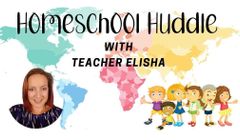

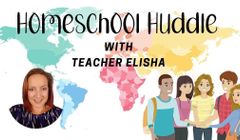
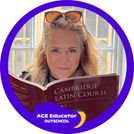
1-on-1 Tutoring
